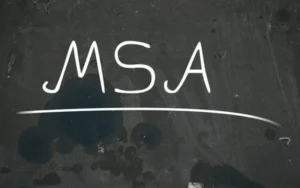What is the Heritage and Stabilization Fund (HSF)?
The Trinidad and Tobago government created the Heritage and Stabilization Fund in March 2007. The 2000-founded Interim Revenue Stabilization Fund was its predecessor.
The Fund aims to conserve and invest surplus petroleum income to support state spending during revenue downturns and preserve a legacy for future generations.
Understanding the HSF
Act No. 6 of 2007 established the Heritage and Stabilization Fund. The currency is the U.S. dollar, with a fiscal year ending in September. The Fund supports the islands’ economy when oil and natural gas prices decline.
By 2022, the fund’s net assets were $4.6 billion, down from $5.5 billion in 2021 and $1.4 billion in 2007.
Rules of Fund
The Fund’s goals are to “(a) smooth out the effects on or maintain public spending during times of lower revenue, whether due to a drop in the price of natural gas or crude oil; (b) create a different source of income to support public spending during times of lower revenue due to the depletion of nonrenewable petroleum resources; and (c) leave a legacy for future generations of Trinidad and Tobago citizens through savings and investments.”
The Fund’s statute limits withdrawals to 60% of the petroleum income deficit or 25% of the Fund’s balance at the start of the year, whichever is smaller. The Act prohibits withdrawals that would reduce the Fund’s balance below $1 billion.”
Withdrawals permitted: “Where the petroleum revenues collected in any financial year fall below the estimated petroleum revenues for that financial year by at least 10%, withdrawals may be made from the Fund.”
Recent Fund History
After a significant decline in energy prices in 2015, the Fund withdrew $375 million from its yearly budget—the first net withdrawal since the Fund’s founding. The Fund reported a 5.34% cumulative annualized return from inception in its 2016 annual report, surpassing the benchmark of 4.87%.
The Fund had a net asset value of $5.47 billion in 2020/2021 after withdrawing $2.5 billion to “ease the hardships faced by the most affected sections of the population and by small and medium-sized businesses.”
The fund’s net asset value fell to $4.7 billion in June 2022, half a million lower than in the first quarter.
A sovereign wealth fund?
A sovereign wealth fund is usually a government-created investment mechanism for social programs, emergencies, politics, or other causes.
What is the meaning of the Stabilization Fund?
A government-created stabilization fund maintains funds to stabilize an economy.
What’s the Heritage Fund?
Governments or other entities create heritage funds to be used for specific objectives. Heritage grants can improve or maintain historical sites and property and support specific groups’ educational initiatives.
Bottom Line
The Trinidad and Tobago Heritage and Stabilization Act of 2007 established the Fund. The plan was to keep and invest surplus petroleum earnings to cushion financial downturns and pay for state spending.
Conclusion
- Trinidad and Tobago’s sovereign fund, the History and Stabilization Fund, preserves history and buffers economic downturns.
- The 2007 Heritage and Stabilization Act No. 6 established the Fund.
- The last quarterly report showed a $4.7 billion net asset value for the HSF in June 2022.








































